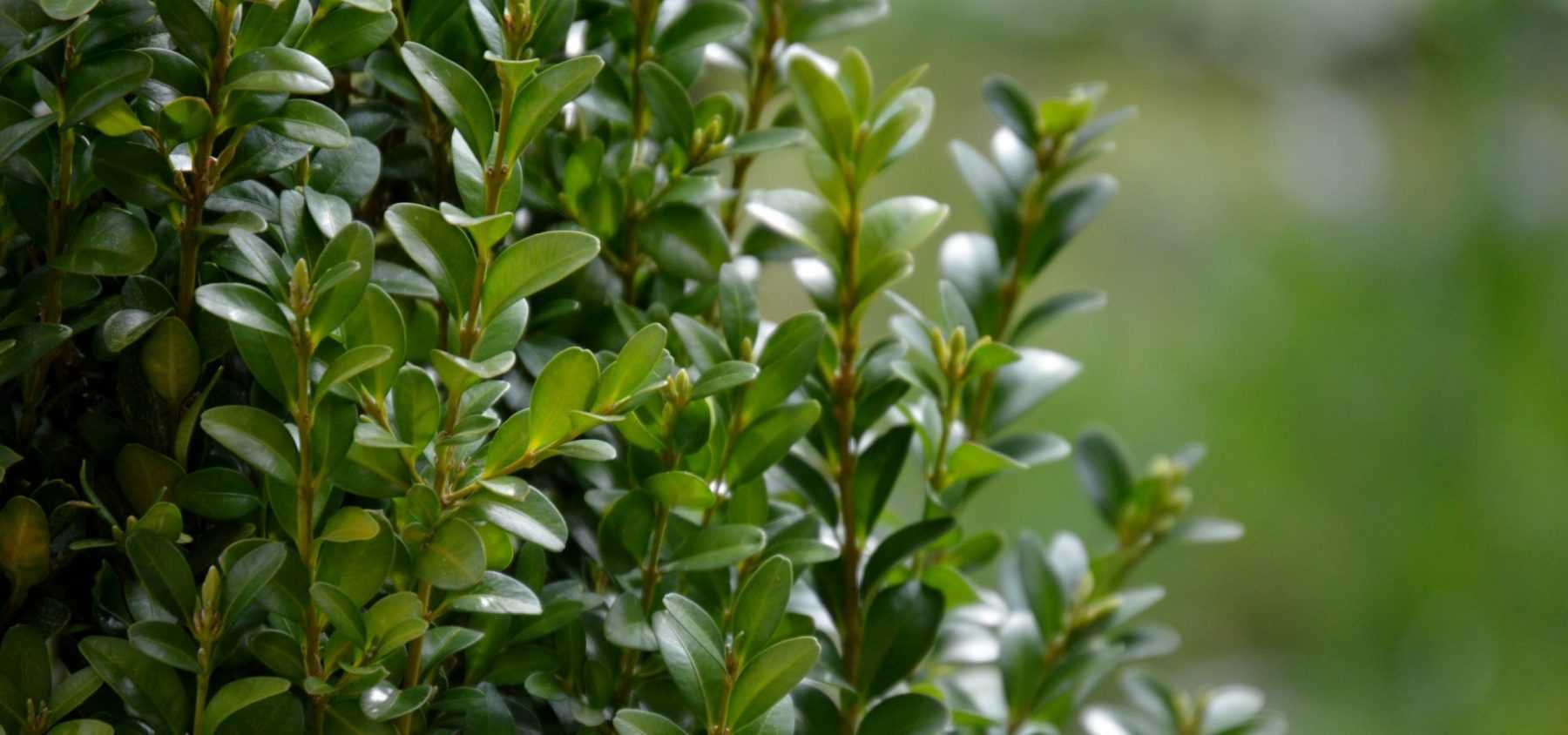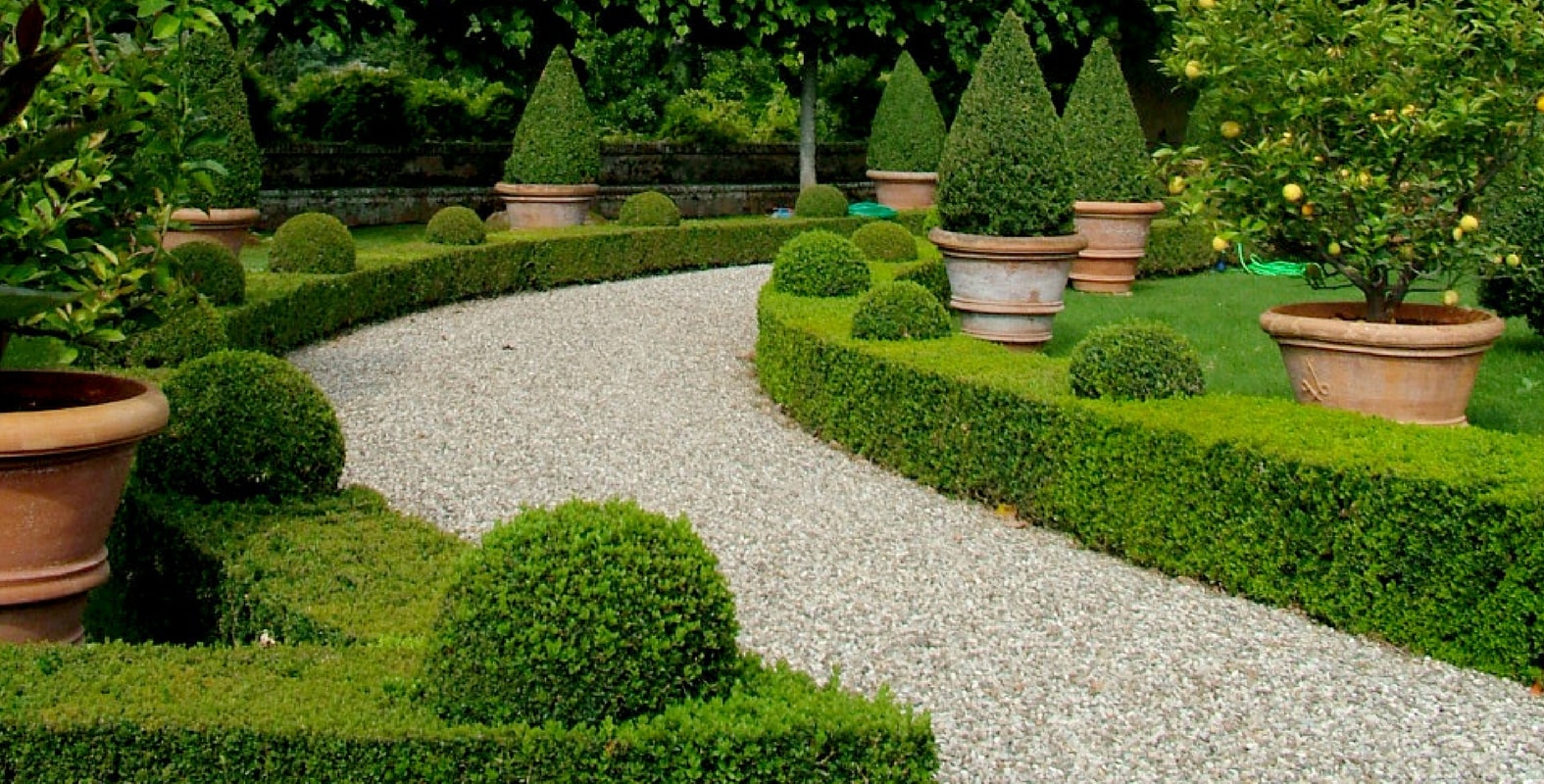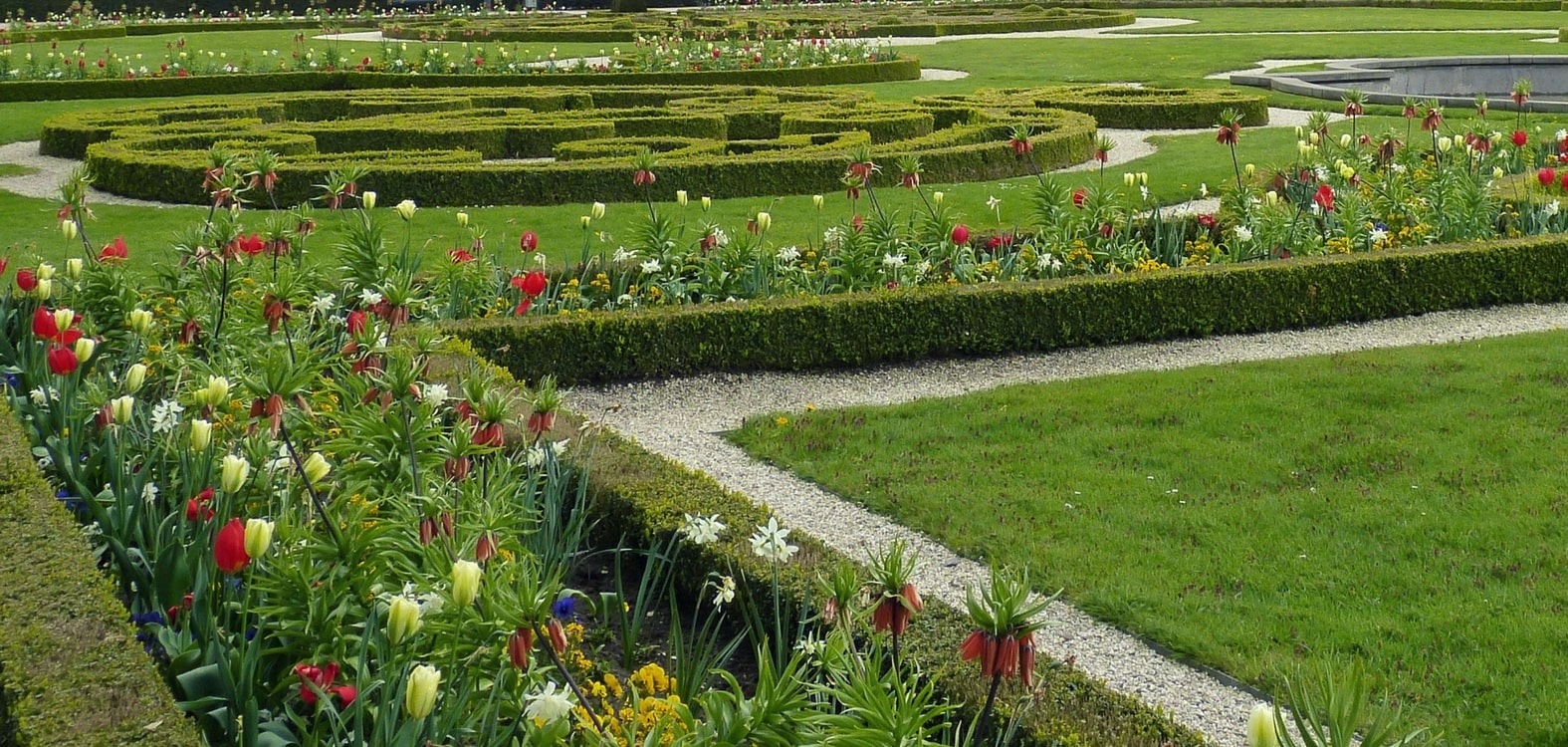
Planting a boxwood hedge
All our advice on when, where and how to plant
Contents
The boxwood, or Buxus sempervirens, is a quintessential plant in French formal gardens, where it has enabled the development of topiary art, alongside yew, which also responds very well to pruning. Boxwoods can be shaped into the most whimsical forms, taking on the appearance of pyramids, spheres, spirals, or other sculptural designs. They are also frequently used as low hedges or borders, trimmed into neat squares, to define flower beds in French-style gardens. They boast evergreen foliage that is both compact and uniform, in a beautiful shade of green. Their slow growth rate reduces the need for frequent pruning. Discover all our tips for successfully planting a boxwood border!
Which variety should you choose?
For a beautiful border, we recommend the ‘Suffruticosa’ variety, which is slow-growing but very dense. Its habit is more compact than others: it does not exceed 1 metre in height. For a taller hedge, choose the standard species, Buxus sempervirens. There are also varieties with variegated foliage, green and yellow.
The choice of boxwood variety depends on the desired effect and the maintenance you are willing to provide:
- For a low and very dense border, the Buxus sempervirens ‘Suffruticosa’ variety is ideal. This slow-growing boxwood naturally forms a compact, rounded habit, reaching no more than 80 cm to 1 m in height. Its fine, dense foliage allows for neat and elegant borders with minimal pruning.
- For a taller or more structural hedge, opt for the standard species, Buxus sempervirens. More vigorous, it can reach several metres in height and tolerates pruning very well.
- For a touch of originality, some varieties offer variegated foliage in green and yellow, such as Buxus sempervirens ‘Golden Dream’ or ‘Elegans’. These varieties are perfect for adding a bit of brightness to borders and hedges.
Whatever your choice, be sure to select healthy plants suited to your soil and climate to ensure a beautiful, long-lasting border.
When to plant boxwood?
Boxwood is best planted in early spring (March-April) or in autumn (September-November), when the soil is still workable and temperatures are moderate. These periods allow young plants to establish strong roots before the summer heat or winter frosts.
Avoid planting during frost or heatwave periods, as extreme conditions weaken the roots and hinder plant establishment. In case of drought, ensure regular watering for young boxwoods to support healthy growth.
If planting in autumn, mulching around the base will help protect the roots from cold and maintain good soil moisture.

Where to plant a boxwood hedge?
Undemanding, boxwoods tolerate all exposures, both sun and shade. They do however prefer partial shade.
They tolerate all soil types, even dry or chalky soils, but appreciate rich soils. We recommend adding some compost or organic fertiliser when planting.
They dislike waterlogged conditions: if your soil is heavy, place a layer of pumice or gravel at the bottom of the planting hole to ensure drainage. Moreover, planting them in well-drained soil will help prevent fungal diseases that are currently causing significant damage to boxwoods.
How to plant?
- Start by stretching a garden line at the desired location to create a perfectly straight border.
- Dig a trench along the line, one spade‘s depth and width.
- You can place some pumice or gravel at the bottom to improve drainage.
- Backfill the trench halfway with soil mixed with well-rotted compost and some fertiliser.
- Take the boxwood plants one by one and press them against the trench wall, spacing them 20 cm apart. For an instantly dense effect, you can plant them 15 cm apart. If you want a taller hedge, space them 70 cm apart. In this case, avoid the ‘Suffruticosa’ variety, which is quite compact.
- Fill in by replacing the soil around the young plants, then firm down.
- Water thoroughly.
We recommend installing mulch to keep the soil cool and also limit weed growth.

How to care for your boxwood hedge?
Prune for the first time about six months after planting, then regularly once or twice a year. Carry out pruning in late winter and early autumn, avoiding periods of frost or extreme heat, and choose dry weather. Trim the young shoots using hedge shears, optionally using a garden line to achieve a straight cut. Pruning boxwood will help maintain a neat alignment and dense foliage, ensuring a beautiful border.
Boxwood is currently facing serious health issues. It is severely threatened by the box tree moth, a nocturnal butterfly whose caterpillars devastate plantings. To combat this, you can use an organic insecticide containing the bacterium Bacillus thuringiensis or install pheromone traps. Boxwood is also attacked by two fungal diseases, Cylindrocladium buxicola and Volutella buxi. When infected, brown spots appear on the foliage, which then dries out and falls. Disinfect your shears after pruning boxwood to prevent spreading these diseases. Also avoid overhead watering, as moisture on the foliage encourages their development.
To go further
- Watch Olivier’s video on boxwood alternatives
- Subscribe!
- Contents

































